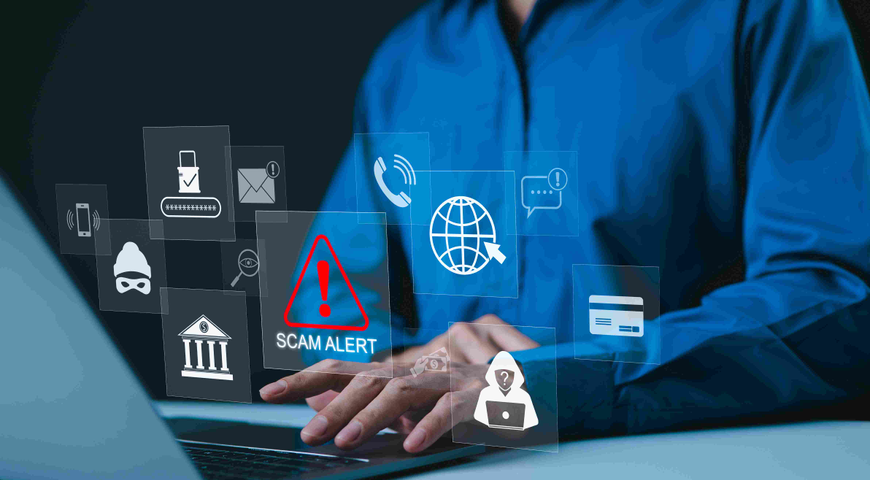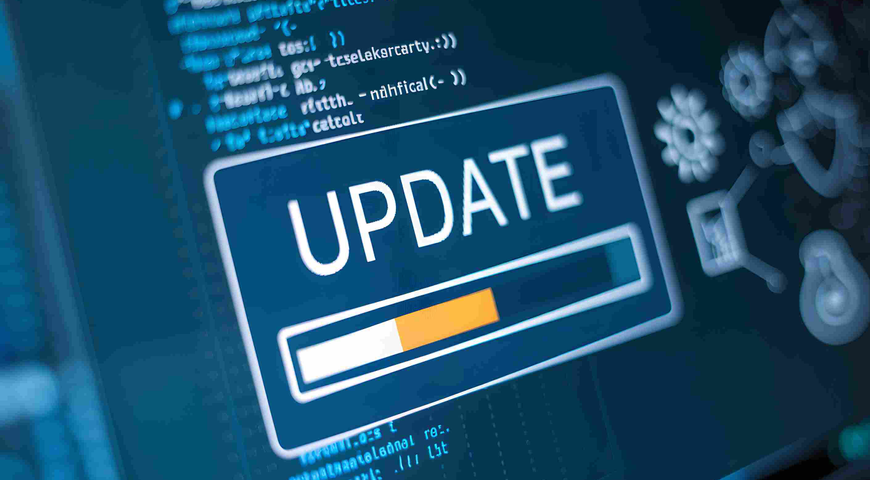
Imagine this: You wake up one morning to find your bank account drained, your credit cards maxed out, and your credit score in ruins. You've become a victim of identity theft, a crime that's as insidious as it is pervasive. Every 22 seconds there is a new victim of identity theft and 15 million Americans were victims of traditional identity fraud in 2023. But what exactly is identity theft?
Identity theft is like a digital doppelganger stealing your life. It's when someone takes your personal information — like your name, Social Security number, or credit card details — and uses it to commit fraud or other crimes. This can range from opening new accounts to making purchases or even filing tax returns in your name. Identity theft and fraud is a serious crime that can have long-lasting and devastating effects on its victims and has nearly tripled over the last decade.
Common types of identity theft
- Financial identity theft: This is the most common type, where unauthorized individuals use your credit cards, bank accounts or other financial information to make purchases or obtain loans.
- Medical identity theft: This involves using your personal information to obtain medical services or submit fraudulent insurance claims. It can lead to incorrect medical records and potential health risks.
- Tax identity theft: This occurs when someone files a tax return in your name to claim a refund. It can delay your legitimate tax refund and cause complications with the IRS.
- Child identity theft: This involves stealing a child's personal information to open new accounts or committing fraud. Children are attractive targets because their credit histories are typically clean.
- Synthetic identity theft: This involves creating a new identity using a combination of real and fake information. It can be difficult to detect and can cause significant damage.
The impact of identity theft on individuals and businesses
For individuals, identity theft can lead to financial loss, damaged credit, and legal issues. Victims may face significant financial losses, damaged credit scores and legal battles to clear their names. American adults lost a total of $43 billion to identity fraud in 2023, according to a report by Javelin. The emotional and psychological impact can also be severe, causing anxiety, stress, and a sense of violation.
For businesses, identity theft can lead to reputational damage, loss of customer trust and potential legal liabilities. Data breaches can result in significant financial losses and regulatory penalties, affecting their ability to operate and compete in the market. In the beginning of 2024, there was a leak of 26 billion records; this was called the ‘mother’ of all breaches.
How identity theft occurs
Methods used by identity thieves
Identity thieves are like digital burglars, using a variety of methods to steal personal information. Here are some of their most common tactics for identity theft:
- Phishing: Imagine receiving an email that looks like it's from your bank or your electricity provider, asking you to click a link and provide your login details. That's phishing — a trick to get you to divulge personal information.
- Malware: Picture this: You download a seemingly harmless file, but it's actually malicious software designed to steal your data. Malware can capture keystrokes, steal passwords and access sensitive information.
- Data breaches: Think of a data breach as a digital heist. Hackers exploit vulnerabilities in corporate databases to access large amounts of personal information, making it available to identity thieves.
- Physical theft: Sometimes, the old-fashioned methods still work. Thieves can steal wallets, mail, or other physical documents containing personal information. They might also use skimming devices to capture credit card information at ATMs or gas pumps.
- Social engineering: This is the art of manipulation. Thieves might pose as legitimate representatives to gain your trust and obtain sensitive information through phone calls, emails or in-person interactions.
Online vs. offline identity theft
Identity theft can happen both online and offline. Understanding the differences can help you get the best identity protection for yourself.
- Online identity theft: Online identity theft is like a digital ghost, hard to detect and capable of striking from anywhere in the world. It occurs through hacking, phishing and malware, and it's becoming increasingly common as more personal information is stored and shared online.
- Offline identity theft: Offline identity theft is more tangible but no less dangerous. It involves physical theft of documents, dumpster diving, and skimming devices. While it can be easier to detect, it can still cause significant damage.
Real-life examples and case studies
Real-life examples and case studies can provide valuable insights into how each identity theft incident occurs and its impact on victims. Below you can see an overview of what happened this and last year.
- 15 million Americans were identity theft victims of traditional fraud in 2023
- The Federal Trade Commission (FTC) received more than one million identity theft complaints from consumers, with credit card fraud as the number one type of identity theft report. (Federal Trade Commission, Consumer Sentinel Network Data Book, 2023).
- Leak of 26 billion records may prove to be ‘mother’ of all breaches in the beginning of 2024
- There was a total of 3,205 data compromises in 2023, impacting over 353 million victims — a 72% increase from the all-time high in 2021. (Identity Theft Resource Center (ITRC), Data Breach Report, 2023.
- In 2023, many data compromises were linked to cyberattacks, followed by phishing / smishing / business email compromise, ransomware, and then malware (Identity Theft Resource Center (ITRC), Data Breach Report, 2023.
What is the importance of identity theft protection ?
Why everyone needs identity theft protection?
Identity theft protection services are crucial for everyone, regardless of age, occupation, or lifestyle. The risks of identity theft are real and can have severe consequences.
The risks of identity theft
Identity theft can lead to financial loss, damaged credit, and legal issues. Victims may face significant financial losses, damaged credit scores, and legal battles to clear their names.
Potential financial and legal consequences
The financial and legal consequences of identity theft can be severe. Victims may face significant financial losses, damaged credit scores, and legal battles to clear their names. They may also face difficulties in obtaining loans, credit or employment. The legal consequences can be complex and time-consuming, requiring the assistance of legal professionals.
Emotional and psychological impact
The emotional and psychological impact of identity theft can be significant. Victims may experience anxiety, stress and a sense of violation. They may also feel a loss of control and trust, affecting their mental well-being and relationships. The emotional and psychological impact can be long lasting, requiring support and counseling.
Who is most at risk?
While everyone is at risk of identity theft, certain groups are more vulnerable than others. Understanding who is most at risk can help you take appropriate measures and ideas how to choose the best identity theft protection services for yourself and your loved ones such as friends or family.
High-risk groups
- Elderly: The elderly are often targeted due to their vulnerability and trusting nature. They may be less familiar with technology and more likely to fall for scams and phishing attempts.
- Children: Children are attractive targets because their credit histories are typically clean. Identity thieves can use their personal information to open new accounts or commit fraud without detection.
- Frequent online shoppers: Individuals who shop online frequently are more exposed to online threats. They may be more likely to fall for phishing attempts or have their personal information stolen through data breaches.
- High-income individuals: High-income individuals are attractive targets because they have more assets and financial resources. They may also have more complex financial portfolios, making them more vulnerable to identity theft.
Factors that increase your vulnerability
- Weak passwords: Using weak or easily guessable passwords can make it easier for identity thieves to access your personal information.
- Unsecured networks: Using public Wi-Fi or other unsecured networks can make it easier for identity thieves to intercept your personal information.
- Lack of awareness: Not recognizing phishing attempts or scams can make you more vulnerable to identity theft. Being aware of the risks and taking appropriate measures can help you fortify your identity theft protection levels of your personal information.
- Sharing personal information: Sharing personal information online or with strangers can make you more vulnerable to identity theft. Being cautious about who you share your information with can help protect your personal information.
Statistics and trends in identity theft
The number of identity theft cases continues to rise each year, with millions of individuals and businesses affected. According to Christina Ianzito of AARP, Identity fraud cost Americans $43 billion in 2023, $23 billion in losses for traditional identity fraud (resulting in a 13% increase in overall losses for U.S. adult victims of identity fraud), and an additional $20 billion in losses for identity fraud scams.
Identity theft is also becoming more sophisticated, with cybercriminals developing new methods to steal personal information. The use of malware, phishing and data breaches is on the rise, making it more important than ever to have a proper identity theft protection plans for your personal information.
Key features of the best identity theft protection services
Identity theft monitoring service
Monitoring services are a crucial component of identity theft protection. They help detect unauthorized activity and alert you to potential threats.
Credit monitoring
Credit monitoring is like having a guardian angel for your credit report. It involves continuous monitoring of your credit reports to detect any unauthorized activity. It can help you identify fraudulent accounts, credit inquiries, and other suspicious activities. Credit monitoring can also help you maintain a good credit score by alerting you to changes in your credit report.
Social Security number monitoring
Social Security number monitoring is like a digital watchdog for your Social Security number. It involves tracking the use of your Social Security number to prevent fraudulent activities. It can help you detect unauthorized use of your Social Security number, such as opening new accounts or filing fraudulent tax returns. Social Security number monitoring can also help you protect your identity and prevent financial loss.
Public record monitoring
Public record monitoring is like a digital detective, scanning public records for any misuse of your personal information. It can help you detect fraudulent activities, such as address changes, court records and other public records. Public record monitoring can also help you protect your identity and prevent financial loss.
Alerts and notifications
Alerts and notifications are essential components of identity theft protection. They help you stay informed about potential threats and take appropriate action.
Real-time alerts for suspicious activities
Real-time alerts for suspicious activities are like a digital alarm system, providing immediate notifications of any unusual activity related to your personal information. They can help you detect fraudulent activities, such as unauthorized credit inquiries, account changes and other suspicious activities. Real-time alerts can also help you take immediate action to protect your identity and prevent financial loss.
Types of alerts
- Credit inquiries: Alerts for new credit applications or inquiries on your credit report.
- Account changes: Notifications of changes to your existing accounts, such as address changes or new account openings.
- Public records: Alerts for changes in public records, such as court records or address changes.
- Social Security number: Notifications of any activity related to your Social Security number, such as new account openings or fraudulent tax returns.
Customizable alert settings
Customizable alert settings allow you to tailor alerts to your specific needs and preferences. They can help you receive alerts for the activities that matter most to you, such as credit inquiries, account changes, or public records. Customizable alert settings can also help you reduce the number of false alarms and focus on the most critical threats.
What are the best identity theft protection services?
Review of leading providers
When choosing an identity theft protection service, it's essential to review the leading providers and compare their features, benefits and pricing. Here is an overview of some of the top-rated identity theft protection services.
Overview of top-rated identity theft protection services
- Acronis True Image: Acronis True Image goes beyond traditional backup and integrated cybersecurity features by offering Identity Theft Protection in their Advanced and Premium subscription for U.S. customers, helping you safeguard your sensitive information from identity theft and fraud. Acronis has partnered up with Iris®, powered by Generali, so users can now make use of its Identity Theft Protection services in Acronis True Image, where they have access to 24/7 identity monitoring and resolution services from Iris'® industry-leading support team. Offering a suite of full data monitoring support through the Iris® Identity Protection dashboard, including identity monitoring and alerts, email health check, and a 24/7 identity theft resolution service, all available directly within Acronis True Image.
- LifeLock: LifeLock is a well-known identity theft protection service that offers extensive monitoring and restoration services. It provides credit monitoring, Social Security number monitoring, and public record monitoring to help detect and prevent identity theft.
- IdentityForce: IdentityForce is another leading identity theft protection service that offers advanced monitoring and alerts. It provides credit monitoring, Social Security number monitoring, and public record monitoring to help detect and prevent identity theft. It also offers social media monitoring to help protect your online identity.
Key features and benefits
Acronis True Image:
- Data backup: Comprehensive data backup features, allowing you to do full image backups, Microsoft 365 backups, real-time disc cloning, cloud restore and selective file and folder backups.
- Cybersecurity: Advanced cybersecurity features, such as anti-malware and anti-ransomware protection including malicious URL filtering.
- Identity theft protection: Acronis True Image offers identity theft protection features, including credit monitoring, Social Security number monitoring and public record monitoring.
LifeLock:
- Credit monitoring: LifeLock provides credit monitoring services, including alerts for new credit applications, account changes and other suspicious activities.
- Social security number monitoring: LifeLock offers Social Security number monitoring services, including alerts for any activity related to your Social Security number.
- Public record monitoring: LifeLock provides public record monitoring services, including alerts for changes in public records, such as court records or address changes.
IdentityForce:
- Credit monitoring: IdentityForce offers credit monitoring services, including alerts for new credit applications, account changes and other suspicious activities.
- Social security number monitoring: IdentityForce provides Social Security number monitoring services, including alerts for any activity related to your Social Security number.
- Public record monitoring: IdentityForce offers public record monitoring services, including alerts for changes in public records, such as court records or address changes.
- Social media monitoring: IdentityForce provides social media monitoring services, including alerts for any activity related to your social media accounts.
Identity theft protection pricing comparison
- Acronis True Image: Acronis True Image offers competitive pricing with added value through data backup and cybersecurity features. The pricing varies depending on the identity theft protection plan and the number of devices you want to protect. Identity Protection* is included with their Advanced and Premium plans that includes cloud storage as well, starting with 50 GB.
- LifeLock: LifeLock offers various plans to suit different needs and budgets. The pricing ranges from basic to premium plans, with additional features and benefits available in the higher-tier plans.
- IdentityForce: IdentityForce offers a range of plans with different levels of protection. The pricing varies depending on the plan and the number of features you want to include.
Detailed comparison and recommendations
When choosing an identity theft protection service, it's essential to consider your specific needs and preferences. Here is a detailed comparison and recommendations based on different scenarios.
Best for families
- Acronis True Image: Acronis True Image is an excellent choice for families with its comprehensive protection and data backup features. It offers a holistic approach to safeguarding your digital life, including identity theft protection, data backup and cybersecurity features for up to five computers.
- LifeLock: LifeLock is also a good choice for families, with its extensive monitoring and restoration services. It provides credit monitoring, Social Security number monitoring, and public record monitoring to help detect and prevent identity theft.
Best for individuals
- LifeLock: LifeLock is a strong choice for individuals, with its extensive monitoring and restoration services. It provides credit monitoring, Social Security number monitoring, and public record monitoring to help detect and prevent identity theft.
- IdentityForce: IdentityForce is another good choice for individuals, with its advanced monitoring and alerts. It provides credit monitoring, Social Security number monitoring, and public record monitoring to help detect and prevent identity theft. It also offers social media monitoring to help protect your online identity.
For businesses
- IdentityForce: IdentityForce can be ideal for businesses, with its advanced monitoring and alerts. It provides credit, Social Security number and public record monitoring to help detect and prevent identity theft. It also offers social media monitoring to help protect your online identity.
- Acronis True Image: Acronis True Image is also a good choice for businesses, with its comprehensive protection and data backup features. It offers a holistic approach to safeguarding your digital life, including identity theft protection, data backup and cybersecurity features.
Conclusion
For the best identity theft protection: Acronis True Image offers the best value with its integrated data backup and cybersecurity features. It provides a holistic approach to safeguarding your digital life, including identity theft protection, data backup and cybersecurity features.
Upgrade your cyber protection - Get the best Identity theft protection today!
* Available in the U.S. for Advanced and Premium subscriptions.
Sources:
1. https://identitytheft.org/statistics/
2. https://www.aarp.org/money/scams-fraud/info-2024/identity-fraud-report.html
3. https://identitytheft.org/statistics/
4. https://www.javelinstrategy.com/research/2024-identity-fraud-study-resolving-shattered-identity-crisis
5. https://www.itgovernance.co.uk/blog/mother-of-all-breaches-26-billion-records-leaked
About Acronis
A Swiss company founded in Singapore in 2003, Acronis has 15 offices worldwide and employees in 50+ countries. Acronis Cyber Protect Cloud is available in 26 languages in 150 countries and is used by over 21,000 service providers to protect over 750,000 businesses.




